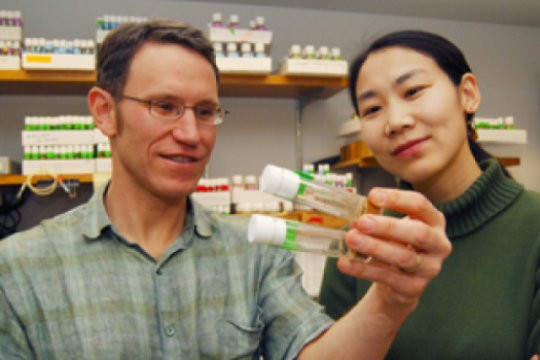On Sept. 21, 2015, SMU hosted a seminar with guest speaker Dr. Jonathan Graff of the UT Southwestern Medical Center, who talked about stem cell research and using one’s very own cells to increase metabolic rate, reduce blood pressure, and reduce blood sugar.
Graff, who completed medical school at Duke University and performed postdoctoral research at Harvard, studies stem cells, fat biology, metabolism and evolution. In the opening comments of his presentation, Graff asserted that “the cure for obesity and diabetes may lie in adipose stem cells,” and Graff reasoned that this is because adipose stem cells burn glucose and fat when stimulated by colder temperatures.
Though his work on metabolic rate and adipose stem cells has only begun in the past two years, Graff and his team have conducted a series of test on the cells of mice and frogs, yet they have not been tested on humans, trying to determine if cold temperatures directly affect adipose cells and metabolic rate.
According to his research, the first issue concerning adipose cells, cells that have the capability of increasing metabolic rate, is locating them in the human body, as not much is known about the location of these cells in people or animals. Through the testing of different types of cells in mice and frogs, the team was able to determine that stem cells for beige adiposities, that is, the cells that increase metabolic burn, reside in stem cell walls. Once the location of these stem cells were established, Graff then was able to test these cells and determined that when made cold, these cells form energy-burning beige adiposities, which increase metabolic burn while decreasing blood pressure.
The second issue that Graff discussed was the issue of the beiging of cells, that is, the stem cells that burn fat when made cold, lose their ability to function the older they get. Therefore, college students have 100 percent ability to make beige cells, while by the age of thirty-five, people only have 50 percent ability to make beige cells, and this rate continues to reduce as one gets older. After pointing out this fact, Graff discussed the ways to reverse the aging process in the cells in older people to allow these cells to continue to beige in old age through drug consumption.
The final obstacle that Graff discussed is the issue of studying and detecting these cells in human beings safely. Graff proposed radiation as a way to study the cells of people, but also mentioned that this method is limiting because an individual would only be able to be tested by radiation once or twice in their lifetime because of the cancer that radiation causes. Through collaboration with other doctors, Graff is proposing a clinical trial having to do with blood test to detect cells, as well as using MRI scanning to detect these adipose cells.
Though these studies have not yet been published, Graff’s research having to do with stem cells and metabolic rate may in fact change the obesity rate and healthiness of Americans in the future, but for the meantime, his findings have surely given SMU biology students something to think about in their academic careers.









